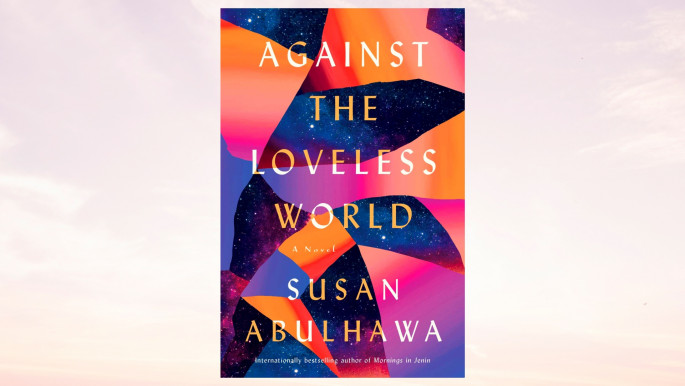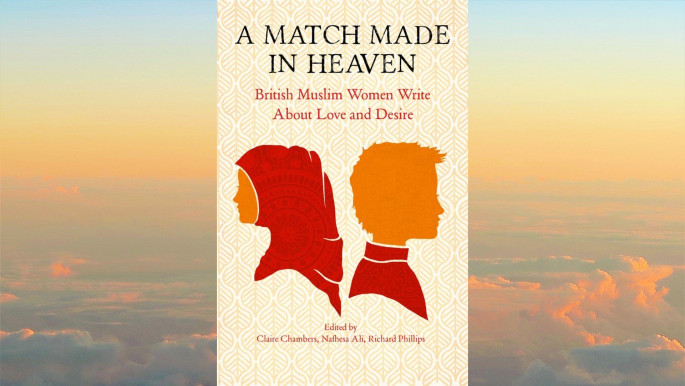Hijab and Red Lipstick: A space for survivors of patriarchy
Trigger warning: Hijab and Red Lipstick includes topics of abuse and sexual assault.
Hijab and Red Lipstick by Yousra Imran is a semi-autobiographical novel that follows the story of Sara, a half-English and half-Egyptian girl as she navigates living her life between pleasing her strict father and growing into her own person. Writing the book, Imran draws on experiences from her and her peers' lives to create a character based on authentic life experiences.
The story starts with Sara walking to meet Sophie, a BBC journalist, at a central London café. Despite feeling uneasy, she begins to discuss her life experiences. With Sophie, the reader starts to learn about the way Sara grew up with a strict, yet social family in London, to her life regressing as she moved to the culturally conservative Gulf.
Daddy's girl
Relationships are the foundation of Sara's story, which the book explains exclusively through her eyes. Her life is at the mercy of her father, whose level of strictness fluctuates throughout the book. The more controlling her father became, the worse her overall life was.
To make matters worse, her father's mood was at the mercy of those around her. The uncles, known as amus in Arabic, took precedence in his life and he often made decisions that affected the whole family based on their advice.
 |
Hijab and Red Lipstick is a semi-autobiographical novel that follows the story of Sara as she navigates her life between a strict father and growing into her own person |  |
As they moved to the Gulf, Sara's father befriended a group of orthodox Salafi Muslims, under whose influence he tightened the family rules and made life unbearable.
His relationship with the whole family was volatile and was something that they were made to navigate together. Sara was exceptionally close to her mum and her sister Saffa, who were also victims of their fathers' controlling tendencies and lack of emotional intelligence.
Symbols
Symbols are used throughout the book – the main one being red lipstick. The colour red is often known for its bold and unapologetic nature and symbolises the fire from within.
As Sara grew into adolescence, as a typical teenager, she tried to find herself outside of the scope of her family dynamics. Red lipstick was one avenue, which was shut down completely by her father, who branded it immodest and morally loathsome.
 |
|
| Read more from TNA's Book Club: Against the Loveless World by Susan Abulhawa |
The first time Sara wore lipstick in front of her father, she had no intention of leaving the house. Her behaviour was monitored so much that she was forced to remove it – denoting how she was judged on how much of her femininity and personal expression she suppressed.
Music is another symbol used throughout the book as a measure of her family's religious status. First, her father shielded Sara's family from English music to ensure they are not influenced by the West, before banning music altogether as her father moved them to the Gulf and became more conservative. Music was often used as a metric for how far Sara and her siblings wanted to rebel.
Packed but flowing
The book is gripping, yet easy to read. Despite getting to know her family extensively, the book was exclusively told through Sara's eyes in the chronology of her own life. The peaks and troughs of her relationship with herself, her family and her religion were all documented, giving the reader an all encompassing view of what it's like to live the way Sara did.
The book describes her family's life events, but explains in detail how they affected Sara. From her brothers' conservative phases, to her sister's rebellion, to her mother enabling her father's abuse by not standing up to him. However, it meant having a limited scope of the depth of the other characters.
Imran described how Sara's father behaved, but she did not give the reader a chance to know him intimately.
The only way the reader is able to understand him is through the way he relates to Sara. The reader understands that her father is a people-pleaser towards non-family members, but can't relate to the traumatic experiences that shaped him to become so emotionally closed off to those closest to him yet wanting to overcompensate by caring for strangers.
In many ways, this gives a picture of how it feels to be raised by someone whose emotional state is opaque, but whose authority is overbearing.
 |
Writing the book, Imran draws on experiences from her and her peers' lives to create a character based on authentic life experiences |  |
Male protagonists
For this reason, Hijab and Red Lipstick can be subject to criticism. The lack of depth for the male protagonists in the book has left it open to accusations that it perpetuates stereotypical tropes against Arab men.
While it is true that not all Arab fathers are the same as Sara's father, Imran says that she did not write the book to perpetuate or break stereotypes.
"I've never denied that my story falls into the stereotype of Arab fathers but what do you do when your life story and that of so many women around you falls into it?" Imran told The New Arab.
She hits back at her critics, saying they are censoring her and invalidating her experiences by only focusing on how her books makes Arab society appear to those outside of the community.
"Some members of the community say they are tired of reading books by Arab and Asian authors about controlling men in the community but we can't pick and choose stories - doing so is a form of censorship," she says.
"No author who writes a novel based on their or other people's life experiences claims that to be the experience of all people - I certainly never claimed my book is the experience of all young Arab women. There's plenty of different stories and experiences out there and I hope more young Arab women will write those stories - my story is just one type of experience, but not all Arab women share the same experience growing up."
 |
|
| Read more from TNA's Book Club: A Match Made In Heaven: British Muslim women on love and desire |
Imran added that she is unapologetic about how the book may be perceived and that many Arab women live in fear of not only expressing their truth in a way that brings shame on their culture, but of being accused of perpetuating orientalism.
"It's certainly tricky to be an Arab woman criticising practices within my community that harm girls and women - many Arab women don't do so publicly for fear that the community will accuse them of perpetuating stereotypes or even of perpetuating 'orientalist tropes' - but we are not outsiders looking at another culture, we are from the very same culture and community holding men accountable for their actions," Imran says.
"In my book, the main character Sara is having a certain way of life imposed on her, and her thought process is that of any teenager, trying to find a way to stop the trajectory of her life being forced on her."
A space for healing or overdone genre?
Another criticism is that Hijab and Red Lipstick is yet another book about a woman trying to break out of a violent household that is emmeshed in misogyny – a genre that some critics believe shows a lack of originality.
"Domestic violence and sexual assault take place in all countries. And misogyny and patriarchal are global too. What does it say though when Arab women are afraid to write about their experiences in creative form because of the backlash within the community accusing them of perpetuating stereotypes," Imran explained.
She added that although she understands her book falls into a certain category that feminist Muslim women write about, she remains unapologetic about it.
"I knew from day one that Hijab and Red Lipstick falls into the stereotype of a young Arab woman with a controlling father, but the sad truth is that this is still the reality for some (not all) Arab women today, in a multitude of countries. I wrote the truth through a young woman's perspective, and there was no way of sugar-coating it."
 |
Hijab and Red Lipstick is an engaging book that tackles the mental impact of living under a form of family dictatorship. The book is action-packed, engaging and hard to put down |  |
She urged that this book is for herself and for her circle of friends whose experiences inspired her writing. In her writing, she found healing for herself and those who may be experiencing the same type of abuse.
"Writing a story like this has been a cathartic process. The stories in the book are loosely based on my own and women in my circle. The men have gone on to live their lives, however our experiences have had a psychological impact that we carry with us until this day. All I ever hoped was that a young woman or young man going through trials and tribulations at home, will pick up this book, and see that there is a light at the end of the tunnel, and that they are not alone."
Imran continued: "I spoke to women with a similar experience about self-healing; it's a process we have had to take into our own hands, through talking therapy, support networks, increased spirituality and for me, creative writing. If there's one takeaway from the book it is that as a Muslim woman you can study and practise your faith on your own terms – fathers and male guardians are not the gatekeepers to religion."
Overall, Hijab and Red Lipstick is an engaging book that tackles the mental impact of living under a form of family dictatorship. The book is action-packed, engaging and hard to put down.
For those expecting an anthropological text, or something that gives insight into every Arab experience, or even to understand the psychology behind controlling men, this is the wrong book to read. It is a semi-autobiography from the lens of those who are affected by patriarchy in the pursuit of limitless self-discovery and expression.
Imran alchemises her experiences by birthing Hijab and Red Lipstick through trauma and offering a space of hope and healing for herself and other survivors.
Diana Alghoul is a journalist at The New Arab.
Follow her on Twitter: @SuperKnafeh and Instagram: @flowerknafeh
 |
|


